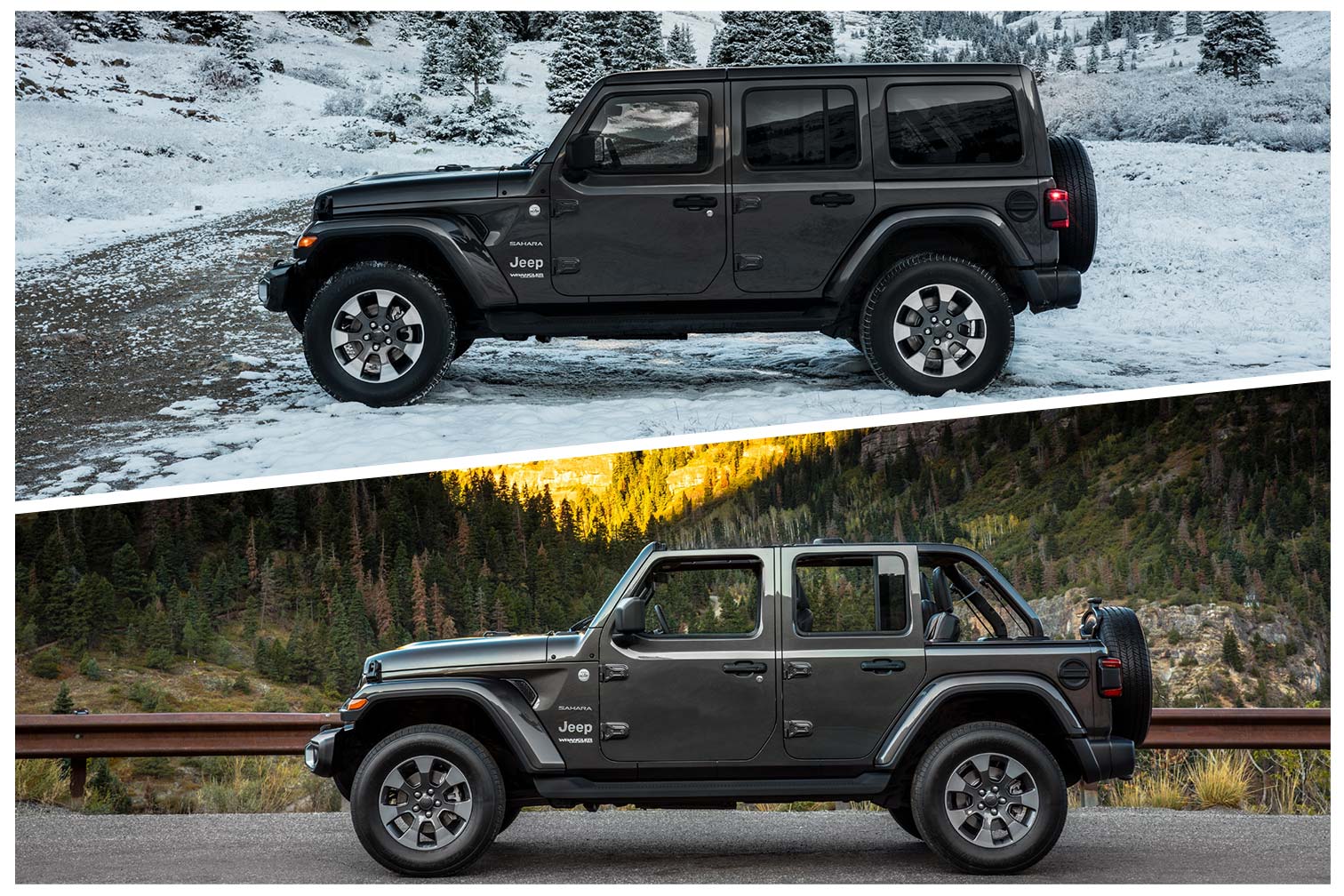How to Store a Jeep Wrangler or Ford Bronco Hardtop Roof
Where should you store your hardtop panels when the weather turns warm? Consider some of these OEM, aftermarket, and DIY options.
 Jeep
Jeep
Article QuickTakes:
Want to enjoy warm weather in a 2022 Jeep Wrangler or 2022 Ford Bronco? If you have the optional hardtop on either model, switching to open-air motoring is a little more involved than just dropping the top—exactly how do you intend on removing and storing those roof panels, anyway?
HARD TOP BASICS
Wrangler’s Freedom Top and Bronco’s Molded-In-Color (MIC) hard top are quite similar in design. Opening the front seats to the skies above requires undoing several latches to release a pair of roof panels. At roughly 13-16 lbs each, they’re small and light enough for a single person to handle.
That isn’t the case with the remaining back panels. Bronco 4-door models feature a third removable panel over the rear seats, which spans the entire width of the vehicle and weighs in at 27.5 lbs. The rear cap—which includes quarter windows and the rear glass—tips the scales at 80.5 lbs on Bronco 2-door models, and 68.1 lbs on 4-door models. The four-door Wrangler Unlimited doesn’t provide a separate panel for rear seat occupants, meaning its rear cap is quite large; at 105 lbs., Jeep advises no fewer than four people lift it.
Both tops were designed to be durable, but they’re not invincible—nor are they inexpensive to replace in case of damage. A complete Wrangler Unlimited top costs about $3,000, while Bronco roof panels—which are scarce to begin with—command steep prices at the parts counter, with a single front panel priced around $700-$1,000. If that isn’t incentive to handle with care, we don’t know what is.
 Ford
Ford
STORAGE OPTIONS
Both Jeep and Ford provide storage bags for the front roof panels when the hard top is ordered, and these bags can be secured within the vehicle itself. A storage bag for the mid-panel for Bronco 4-door models is available separately as a dealer accessory, but is not designed for in-vehicle storage.
In-garage storage options run the gamut from home-made DIY wall-mounted holders and floor-standing racks, to commercially-available metal carts, purpose-built for storing even the largest roof panel. Many of these carts, which often retail in the $150-500 range, offer some adjustment to work with 2- and 4-door Wrangler and Bronco roofs.
SOLO REMOVAL
With the right equipment it’s possible to make top removal a one-person job. A top hoist can be installed on garage ceilings to lift and lower rear caps, sometimes even with an electric winch. These hoists frequently run around $200-$600—and while it is possible to DIY a comparable solution, sourcing individual components to build a comprehensive—and reliable—system may not be your cup of tea.
Don’t have the vertical space for a hoist? Floor-mounted hoists (which resemble an overgrown engine picker) are available, but the $1,200



